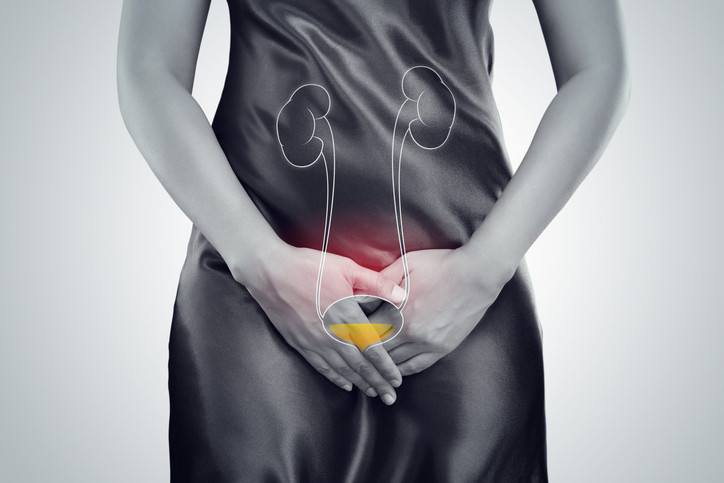
5 timeless habits for better health

What are the symptoms of prostate cancer?

Is your breakfast cereal healthy?

When pain signals an emergency: Symptoms you should never ignore

Does exercise give you energy?

Acupuncture for pain relief: How it works and what to expect

How to avoid jet lag: Tips for staying alert when you travel

Biofeedback therapy: How it works and how it can help relieve pain

Best vitamins and minerals for energy

Should you take probiotics with antibiotics?
Bladder & Bowel Archive
Articles
IBS in the crosshairs
Irritable bowel syndrome (IBS) affects up to 45 million Americans, two-thirds of whom are women. IBS is categorized into three types depending on which symptoms dominate: diarrhea, constipation, or a mix of both. Possible contributors include changes in gut bacteria, faulty nerve signals between brain and intestine, pelvic floor problems, and genetics. Newer treatment approaches target pathways involved in symptoms. Doctors are also repurposing older drugs for IBS, including certain antidepressants and the antibiotic rifaximin (Xifaxan).
Why you keep waking up to go to the bathroom
Making one or more trips to the bathroom every night is the defining characteristic of a medical condition called nocturia. It can be caused by aging, lifestyle habits, or underlying conditions such as an overactive bladder or (in men) an enlarged prostate. Treating nocturia starts with lifestyle changes such as avoiding fluids several hours before bedtime, eliminating caffeinated drinks 10 hours before bedtime, and limiting evening alcohol intake. Medications, pelvic floor exercises, injections of botulinum toxin (Botox), or nerve stimulation treatments may also help.
Did I cause my partner's bladder infection?
While a man cannot directly give his female partner a bladder infection, he can increase her risk with vigorous or frequent sexual intercourse.
Bladder problems that warrant a doctor's visit
Bladder problems in women can increase due to childbirth, menopause, and aging. Additional contributors to bladder symptoms include weight gain, pelvic organ prolapse, and the types of beverages people drink, as well as how much and how often. Women should see a doctor about increasing leakage, urgency, frequency, or nighttime urination; cloudy or strong-smelling urine; pain or burning while urinating; pain during sex; or lower abdominal pain.
Leaking a little urine: It's not just a female problem
Men often have a hard time coping with incontinence (urine leakage). It can leave them feeling depressed or socially isolated. Types of leakage problems in men include urge, stress, and overflow incontinence. Treatment depends on the type of incontinence a man is experiencing. For example, overflow incontinence may get better with a procedure to reduce the size of the prostate; medications, injections in the bladder muscle, and pelvic floor exercises can help with urge incontinence.
Did my partner get her bladder infection from me?
Men do not have to worry about getting bladder infections from their female partners. Women can get urinary tract infections after sex, but this is a result of irritation at the opening of the urethra, which makes it easier for bacteria to enter.
Pregnancy's lasting toll
Pregnancy and childbirth effects on the body can linger or develop years or decades after the birth. Muscles, ligaments, and nerves in the pelvis can be damaged, leading to urine or stool leakage or sagging pelvic organs. Treatment approaches include a pessary, various surgical procedures, or pelvic floor physical therapy. Women can protect their pelvic floor from weakening further by maintaining a healthy weight, preventing constipation, and managing conditions that contribute to chronic cough.
Novel telehealth approach may improve overactive bladder symptoms
A 2022 study found that women with overactive bladder showed significant improvement in urinary symptoms, such as urgency and leakage, after they engaged in a type of telehealth care.
Why do I need to urinate right when I get home?
A sudden urge to use the bathroom when arriving home, sometimes called latchkey incontinence, occurs when the brain associates coming home with the need to urinate, whether the bladder is full or not. Bladder training may help address this pattern.
Bracing for incontinence
Among US women ages 60 or older, the prevalence of urge incontinence (a sudden, unprovoked need to urinate) and stress incontinence (leaking urine with physical activity or pressure on the bladder) appeared to increase between 2005 and 2018. Treatments for urge incontinence include lifestyle modifications (such as avoiding caffeinated drinks or scheduling bathroom breaks), pelvic floor exercises, medications, and Botox injections. Treatments for stress incontinence include pelvic floor exercises, weight loss, vaginal pessaries, bulking agent injections, and bladder sling surgery.

5 timeless habits for better health

What are the symptoms of prostate cancer?

Is your breakfast cereal healthy?

When pain signals an emergency: Symptoms you should never ignore

Does exercise give you energy?

Acupuncture for pain relief: How it works and what to expect

How to avoid jet lag: Tips for staying alert when you travel

Biofeedback therapy: How it works and how it can help relieve pain

Best vitamins and minerals for energy

Should you take probiotics with antibiotics?
Free Healthbeat Signup
Get the latest in health news delivered to your inbox!
Sign Up











